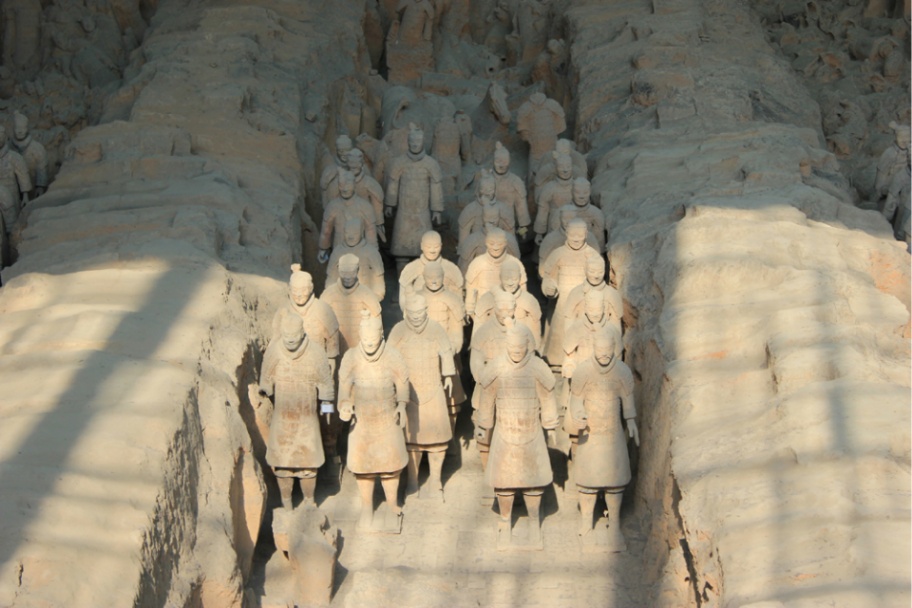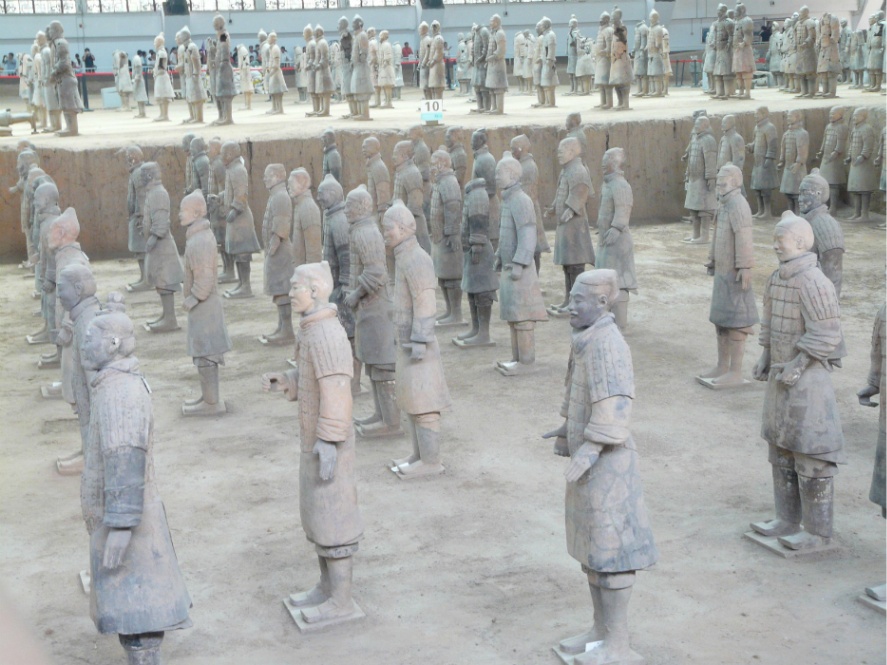The Terracotta Army and Pyramid Tomb of China’s First Emperor, Qin Shi Huang, stand as awe-inspiring testaments to the might and grandeur of ancient China. Discovered in 1974 near the city of Xi’an, these archaeological wonders offer a glimpse into the fascinating world of the Qin Dynasty (221-206 BC).

The Terracotta Army is an extraordinary collection of life-sized clay soldiers, horses, and chariots that were buried with Emperor Qin to protect him in the afterlife. The army consists of thousands of intricately detailed figures, each with unique facial expressions and hairstyles. The soldiers, arranged in battle formation, represent the imperial guard and reflect the military prowess of the Qin Dynasty.
Qin Shi Huang’s pyramid tomb, located nearby, is a massive structure that has yet to be fully excavated. Believed to replicate the imperial palace of the emperor, the tomb is an architectural marvel with intricate designs and underground chambers. Its construction involved sophisticated engineering techniques and an army of laborers.

The discovery of the Terracotta Army and Pyramid Tomb shed light on the immense power and centralization of authority during the Qin Dynasty. Qin Shi Huang’s vision of an eternal empire extended to the afterlife, as evidenced by the elaborate funerary structures.
Archaeologists continue to uncover new sections of the tomb complex and study the Terracotta Army, unraveling more of China’s rich history. The preservation and restoration efforts at the site have provided invaluable insights into ancient Chinese art, warfare, and burial practices.
The Terracotta Army and Pyramid Tomb of China’s First Emperor hold great cultural and historical significance. They have become symbols of China’s ancient civilization and attract millions of visitors each year, marveling at the craftsmanship and scale of these remarkable achievements.

These archaeological wonders serve as a reminder of the achievements and legacy of Emperor Qin Shi Huang, who unified China and laid the foundations for the country’s future development. They stand as a testament to the immense wealth, power, and artistic achievements of ancient China, captivating the world with their remarkable beauty and historical significance.